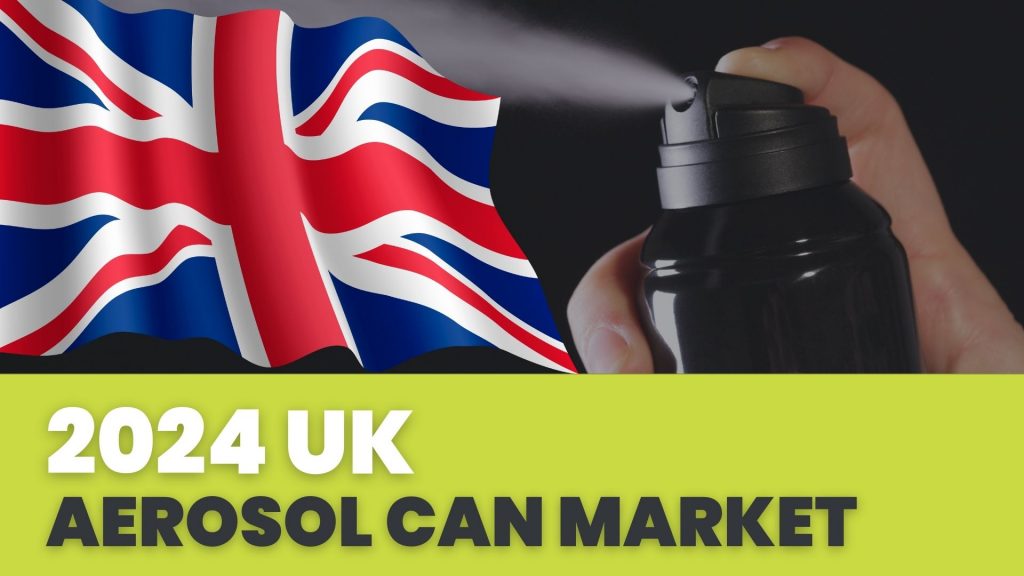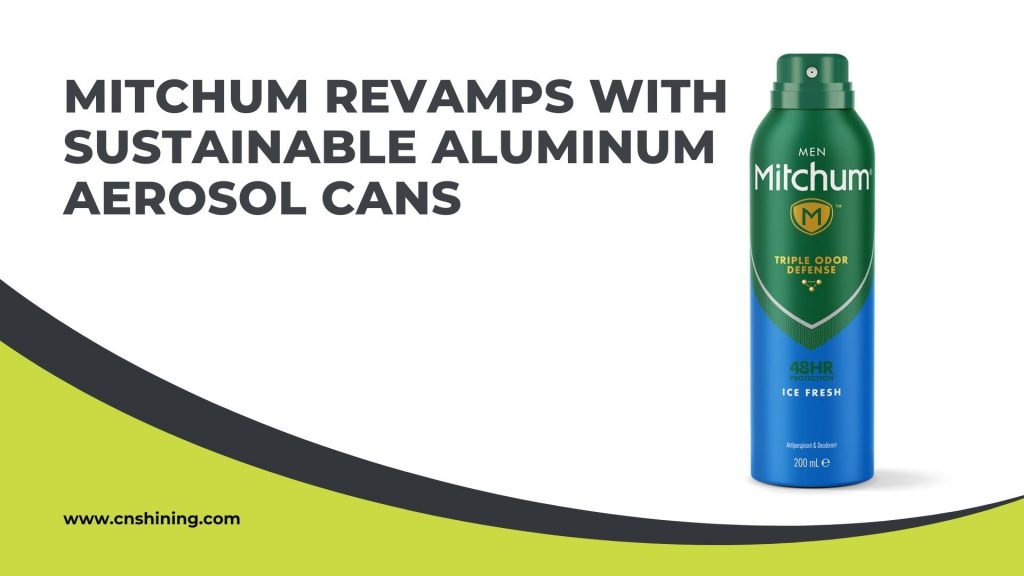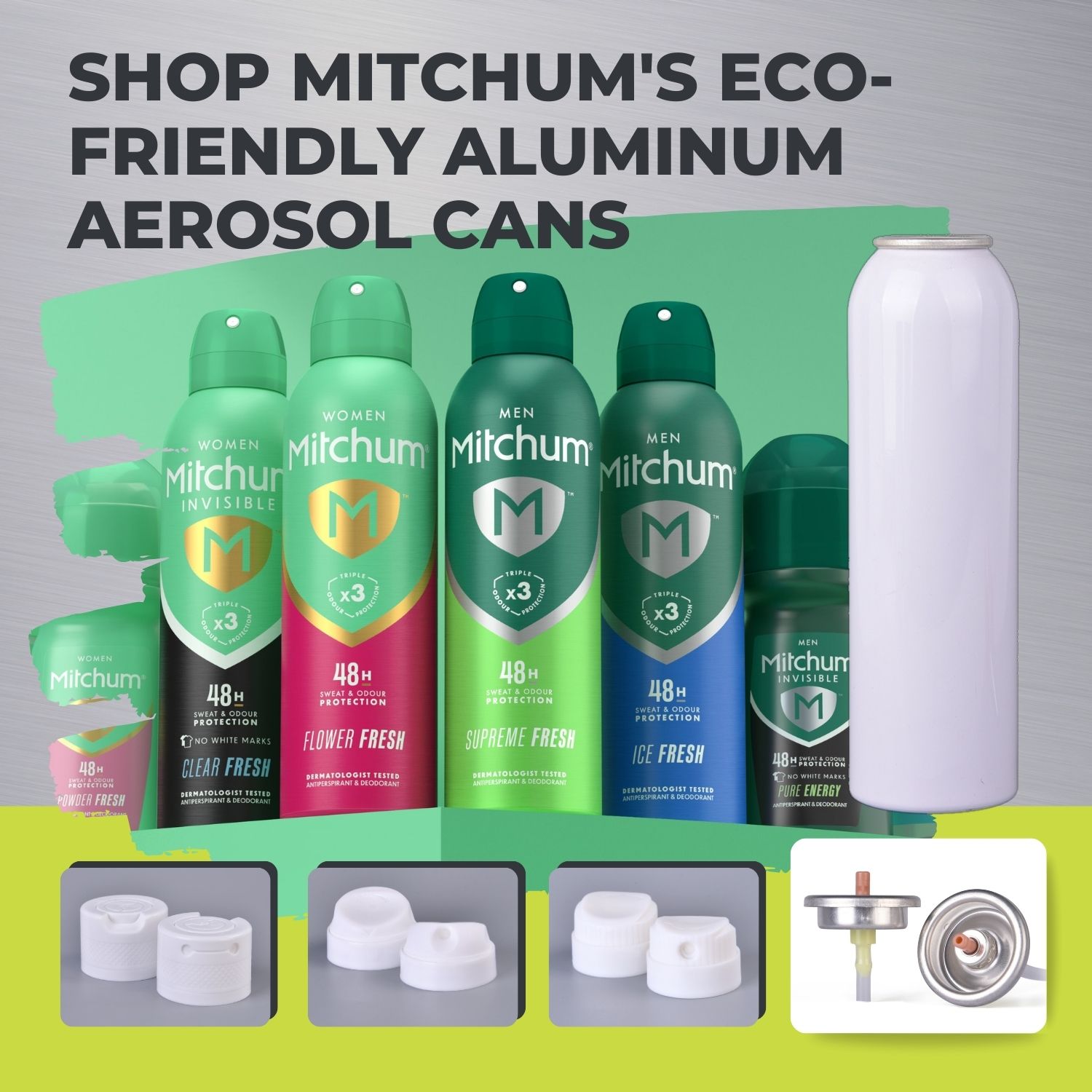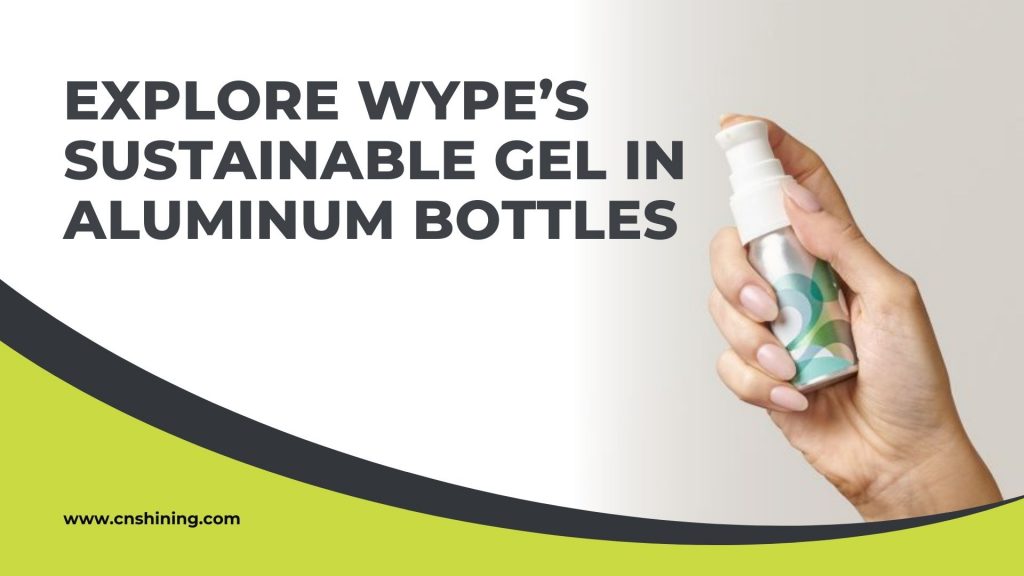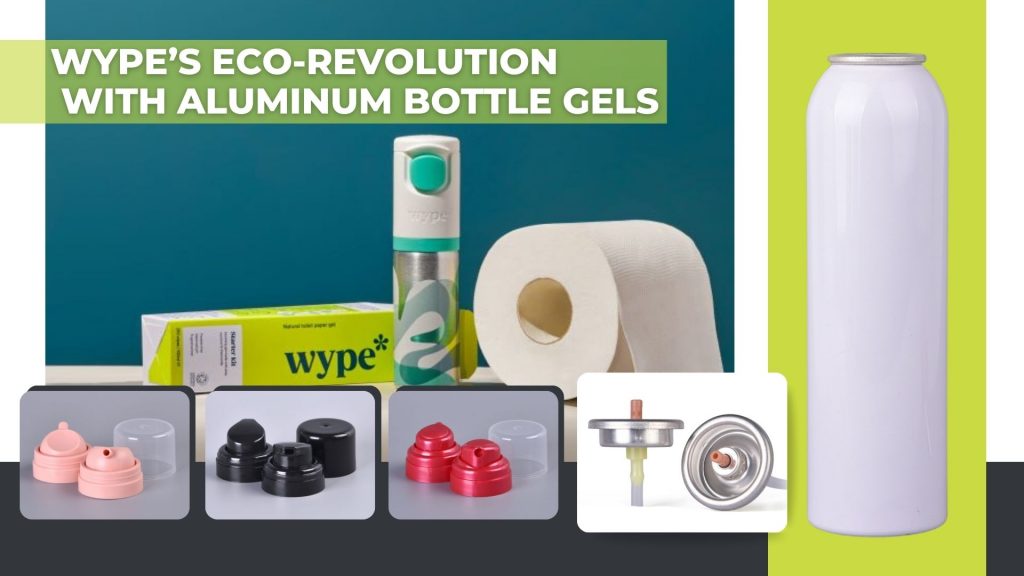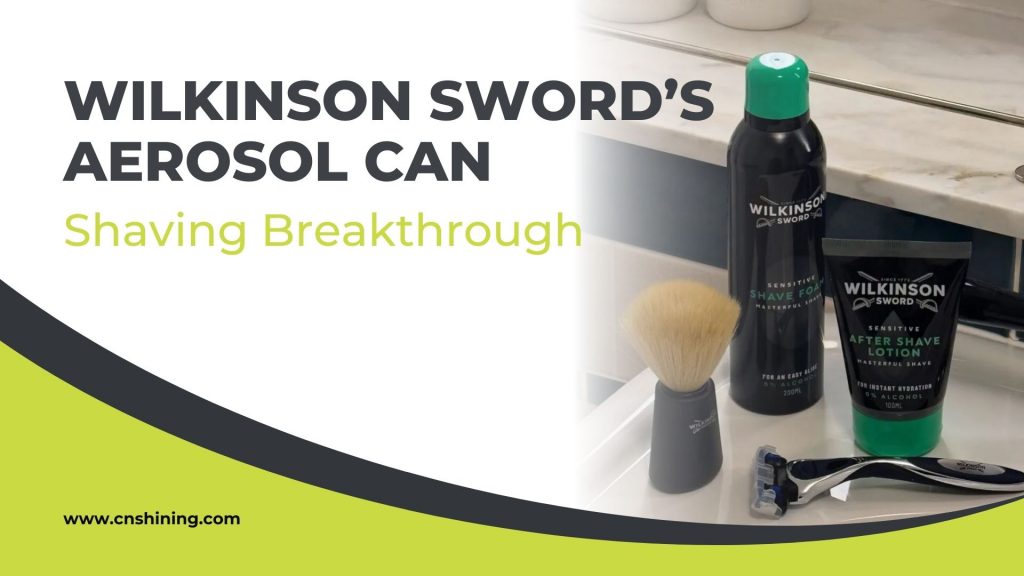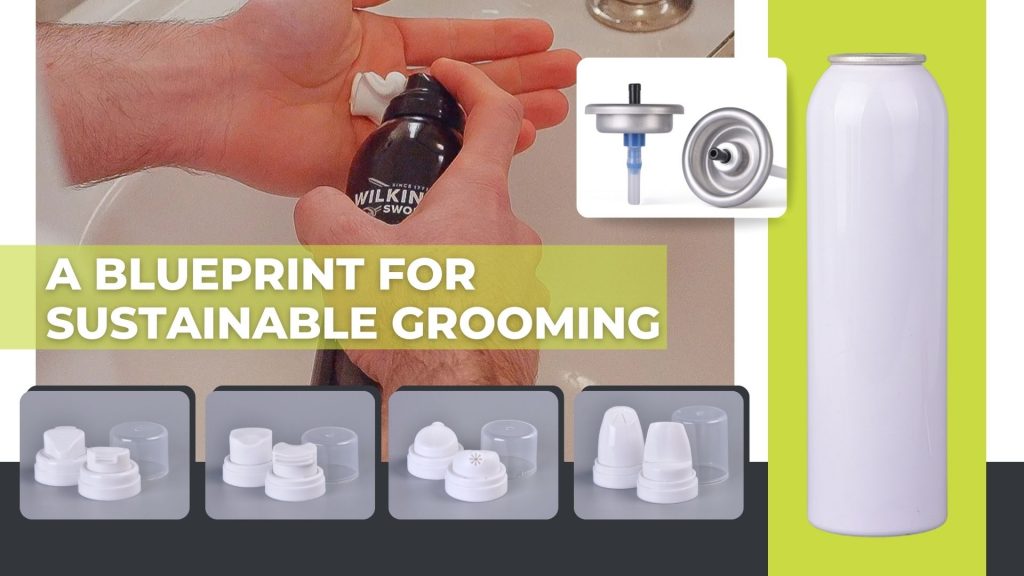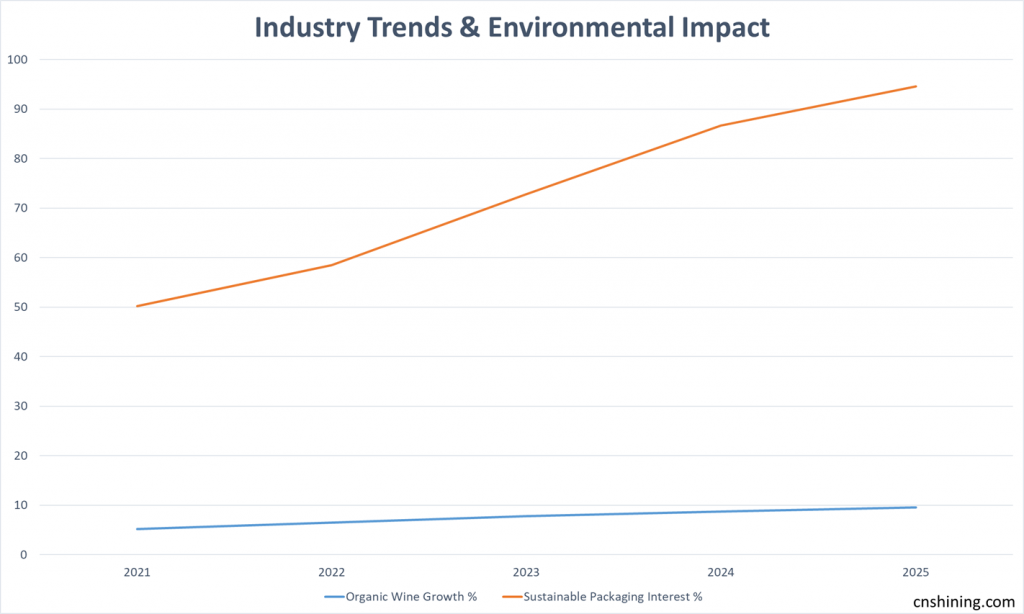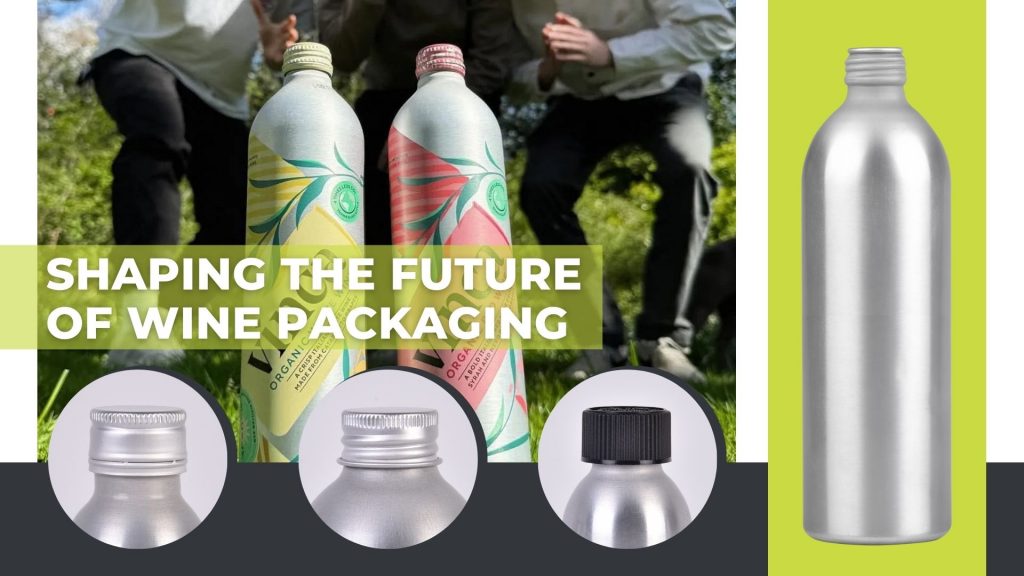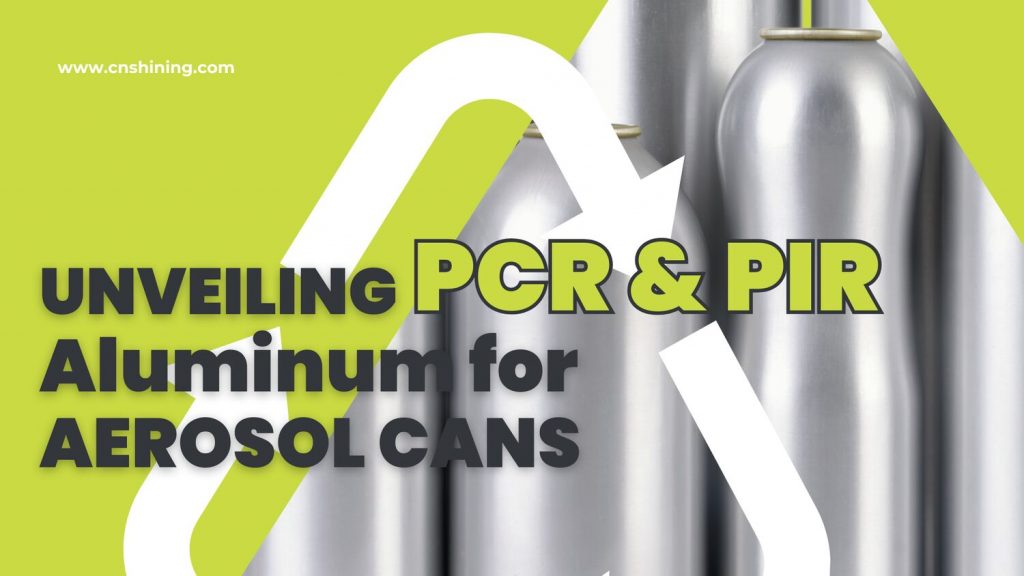
In today’s eco-conscious world, the demand for sustainable packaging is reshaping industries. As a leading Chinese manufacturer of aluminum aerosol cans and aluminum bottles, we recognize the growing importance of materials like pir aluminum and pcr aluminum. These recycled aluminum variants are not just buzzwords—they represent a shift toward greener production and compliance with global environmental regulations. This article introduces Post-Consumer Recycled (PCR) and Post-Industrial Recycled (PIR) aluminum, exploring their definitions, significance, and evolution in the aerosol can industry.
What Are PCR and PIR Aluminum?
PCR and PIR aluminum are types of recycled aluminum that play a pivotal role in sustainable packaging. Understanding their differences is key to appreciating their value:
- PCR Aluminum: Derived from aluminum products discarded by consumers, such as used cables, beverage cans, or lithographic plates. After reaching the end of their useful life, these materials are collected, sorted, and recycled into new aluminum products.
- PIR Aluminum: Sourced from industrial manufacturing waste, such as trimmings, cuttings, or defective pieces generated during production. These scraps are recycled before reaching consumers, making PIR a “pre-consumer” recycled material.
Both materials contribute to a circular economy by reducing the need for virgin aluminum, which has a significantly higher environmental footprint.
Why Sustainable Packaging Matters
The push for eco-friendly aluminum stems from both consumer preferences and regulatory pressures. Studies show that 70% of global consumers prefer products with green packaging solutions, and regulations like the EU’s Circular Economy Action Plan mandate higher recycled content in packaging. For manufacturers, adopting PCR and PIR aluminum offers multiple benefits:
| Benefit | Description |
|---|---|
| Environmental Impact | Recycling aluminum uses 95% less energy than producing virgin aluminum, slashing carbon emissions. |
| Brand Image | Using recycled aluminum cans enhances a brand’s reputation as environmentally responsible. |
| Cost Efficiency | Recycled materials can reduce raw material costs, especially as virgin aluminum prices fluctuate. |
| Regulatory Compliance | Meets stricter environmental laws, avoiding penalties and ensuring market access. |
The Evolution of PCR and PIR Aluminum
The use of recycled aluminum in packaging dates back to the 20th century, but its prominence has surged in recent decades. Key milestones include:
- 1970s: Initial aluminum recycling programs focused on beverage cans, laying the groundwork for PCR aluminum.
- 1990s: Industrial processes improved, enabling PIR aluminum recovery from manufacturing waste.
- 2000s: Global standards like the Global Recycled Standard (GRS) emerged, ensuring traceability and authenticity of recycled materials.
- 2020s: Rising consumer demand and stricter regulations have made PCR and PIR aluminum essential for aerosol can manufacturing.
Today, approximately 75% of all aluminum ever produced remains in use, thanks to its infinite recyclability. This statistic underscores aluminum’s role as a cornerstone of sustainable packaging.
Why Choose PCR and PIR Aluminum for Aerosol Cans?
Aluminum aerosol cans and bottles are ideal candidates for PCR and PIR aluminum due to their lightweight, durable, and recyclable nature. Here’s why these materials are transforming the industry:
Environmental Benefits
Producing virgin aluminum generates significant environmental harm, including bauxite mining and high energy consumption. In contrast, PCR and PIR aluminum offer:
- Lower Carbon Footprint: Recycling aluminum emits up to 95% less CO2 than virgin aluminum production.
- Reduced Waste: PCR aluminum diverts consumer waste from landfills, while PIR aluminum minimizes industrial scrap.
- Resource Conservation: Recycling reduces the need for bauxite mining, preserving ecosystems.
Consumer and Market Appeal
Modern consumers prioritize sustainability, and brands using recycled aluminum cans gain a competitive edge. A 2023 survey by the International Aluminium Institute found that 65% of consumers are willing to pay a premium for products with green packaging solutions. For manufacturers, this translates to increased market share and customer loyalty.
Regulatory Compliance
Global regulations are tightening. For instance, EU’s 2030 recycling targets aim for 60% recycled content in packaging. Using PCR and PIR aluminum ensures compliance, avoiding fines and maintaining access to international markets.
Challenges and Opportunities
While PCR and PIR aluminum offer immense potential, challenges remain:
- Supply Chain Complexity: PCR aluminum requires robust collection and sorting systems, which can be logistically challenging.
- Cost Considerations: Secondary aluminum ingots can be pricier than virgin aluminum due to processing costs.
- Quality Control: Ensuring high purity (e.g., ≥99.5%) for food-grade aerosol cans demands rigorous testing.
However, these challenges present opportunities. Investing in advanced recycling technologies and partnering with industry associations like the International Aluminium Institute can streamline supply chains and enhance material quality.
Conclusion
PCR and PIR aluminum are revolutionizing the aluminum aerosol can industry. By embracing these eco-friendly aluminum materials, manufacturers can reduce environmental impact, meet regulatory requirements, and appeal to eco-conscious consumers. As demand for green packaging solutions grows, our factory is proud to lead the way in delivering sustainable, high-quality aluminum aerosol cans and bottles. Stay tuned for the next article in our series, where we’ll explore the production processes behind PCR and PIR aluminum.
The post Unveiling PCR and PIR Aluminum for Aerosol Cans first appeared on Shining Aluminium Package.]]>In the world of aerosol valve manufacturing, having a clear understanding of essential terminology and available resources can make a huge difference. Aerosol valves are complex systems, used across industries from cosmetics to food to automotive, and require precise engineering to meet both regulatory standards and consumer expectations. This guide serves as a comprehensive reference for manufacturers and suppliers alike, detailing key terms and resources to empower professionals in selecting, designing, and optimizing aerosol valves for their products.
Why Understanding Aerosol Valve Terms Matters for Manufacturers
Understanding the specific components and functionalities of aerosol valves is crucial in production. Knowing these terms helps manufacturers ensure quality, functionality, and safety in their products. This glossary covers terms from actuator types to propellant systems, giving both seasoned and new manufacturers an edge in quality control and innovation.
Glossary of Key Terms in Aerosol Valves
1. Actuator
The actuator is the part of the valve pressed by the user to release the product. Actuators come in various designs, each influencing spray rate, pattern, and flow. In mechanical-break-up (MBU) and non-mechanical break-up (non-MBU) versions, actuators are tailored for applications ranging from fine mists to targeted sprays. Different actuator designs can directly affect product performance, especially in applications like deodorants and insecticides where consistent spray patterns are vital.
2. Propellant
Propellants are gases, often liquefied or compressed, that create pressure in aerosol cans. Common types include hydrocarbons, nitrogen, and carbon dioxide. The choice of propellant affects the valve design and application. For instance, hydrocarbons offer high pressure but come with environmental considerations, whereas nitrogen is a non-flammable, environmentally friendly option.
3. Dip Tube
A dip tube extends from the valve into the product, allowing liquid to be drawn up and sprayed. Proper dip tube length and material are crucial for consistent spray quality, especially in high-viscosity or foaming products. Most dip tubes are designed to maximize product evacuation without clogging.
4. Valve Cup
The valve cup secures the valve to the can and provides the connection point for the actuator. Different materials (tin-plated steel, aluminum) are chosen based on product compatibility, as the valve cup must withstand internal pressures without compromising product integrity.
5. Crimping
Crimping is the process of attaching the valve to the can, ensuring a tight seal to prevent leaks. This is a precision procedure, often requiring specialized equipment and strict quality controls to ensure reliable sealing. Misaligned or improper crimping can lead to valve failure and product leakage.
6. Stem
The stem channels the product from the dip tube to the actuator, controlling the flow rate. Made typically from plastic, stems come with varied orifice sizes to control flow and spray characteristics, particularly important for specialized applications like food-grade or industrial aerosols.
7. Sealing Gasket
The sealing gasket is the component ensuring the valve’s airtight seal when not in use. Different formulations like neoprene or butyl rubber are used based on the chemical composition of the aerosol product, preventing leaks while ensuring product stability over time.
8. Pressure Filling
Pressure filling is a method where the product is filled under pressure to ensure complete can filling. This method is commonly used in applications that require rapid product release and high output, as seen in cleaning sprays and air fresheners.
9. Bag-on-Valve (BOV) System
In a bag-on-valve system, the product is stored in a bag within the can, separated from the propellant. This ensures no contact between the propellant and product, ideal for sensitive formulations like cosmetics or pharmaceuticals.
10. Spray Pattern
The spray pattern is the shape and consistency of the product as it is dispensed. Patterns can range from narrow streams to broad mists, each suited to specific applications like body sprays or industrial lubricants. Adjusting the actuator or orifice can optimize the pattern for different uses.
Key Industry Resources for Aerosol Valve Manufacturers
For manufacturers, staying informed on the latest standards and guidelines is essential. Here are some vital resources and organizations:
- Consumer Specialty Products Association (CSPA): Provides industry standards and technical resources, particularly for environmental and safety compliance. CSPA website.
- European Aerosol Federation (FEA): Sets European standards for aerosol manufacturing, crucial for suppliers operating internationally. FEA website.
- National Aerosol Association (NAA): U.S.-based organization offering guidelines, industry news, and technical support for aerosol manufacturers. NAA website.
- Occupational Safety and Health Administration (OSHA): Ensures safe working conditions and offers guidelines on handling propellants and hazardous substances. OSHA website.
FAQs: Aerosol Valves
To assist manufacturers and suppliers, here are answers to some frequently asked questions:
- What’s the best propellant for environmentally-friendly applications? Compressed gases like nitrogen and carbon dioxide are good choices for eco-friendly products.
- How can I ensure a consistent spray pattern? Use actuators with MBU technology to achieve fine, consistent sprays.
- What’s the importance of crimping? Proper crimping ensures a tight seal, preventing leaks and maintaining product quality.
- How do I select the correct dip tube length? The dip tube should reach the can’s bottom to ensure full product evacuation.
- Can I use the same valve for different product viscosities? No, select valves and stems suited to the specific viscosity for optimal flow control.
- What’s the role of a sealing gasket? Gaskets prevent leaks and ensure product stability by maintaining an airtight seal.
- Are there regulatory requirements for aerosol valves? Yes, compliance with standards from bodies like OSHA and FEA is essential.
- What’s a Bag-on-Valve system used for? BOV systems are ideal for sensitive formulations requiring separation from the propellant.
- How can I control the spray rate? Adjust stem orifice sizes or use actuator modifications to control spray rates.
- Where can I find more resources on aerosol valve technology? Organizations like CSPA, FEA, and NAA provide valuable technical resources.
Conclusion
Having a deep understanding of aerosol valve terminology and resources equips manufacturers with the knowledge to create safer, high-quality products. For more information, contact us directly or visit our aerosol valve page for the latest product offerings and updates. Let’s work together to elevate your aerosol solutions!
The post Resource Part 16: Glossary of Key Aerosol Valve Terms and Industry Resources first appeared on Shining Aluminium Package.]]>Aerosol valves have transformed various industries by offering tailored, precise dispensing solutions. From cosmetics to healthcare, customized aerosol valves are indispensable for delivering products effectively. Here, we’ll explore several successful case studies, focusing on how customized aerosol valves have solved specific industry challenges and provided lasting value.
Examples Across Industries
Customization is at the heart of aerosol valve success. Different industries face unique demands, and the flexibility of aerosol valve design allows manufacturers to meet them. Let’s dive into examples across key sectors where aerosol valves have made significant impacts:
1. Cosmetics Industry: Enhancing User Experience
In cosmetics, aerosol valves enable precise dispensing of products like hairsprays, dry shampoos, and body mists. A notable example is a leading cosmetics brand that wanted a fine, even mist for its luxury fragrance line. By working closely with the valve supplier, the brand developed a mechanical break-up (MBU) actuator for a soft, controlled spray. This customized valve elevated the user experience, and consumer satisfaction skyrocketed.
2. Healthcare Applications: Consistency and Hygiene
The healthcare sector relies on aerosol valves for products such as disinfectant sprays, wound care, and inhalers. A pharmaceutical company collaborated with an aerosol valve manufacturer to develop a valve that ensured consistent particle size for an inhalable medication. This valve, equipped with a high-precision stem and actuator, maintained dose accuracy, meeting stringent healthcare standards.
3. Automotive Industry: Power and Durability
Automotive products, like lubricant sprays and cleaners, demand durability and controlled application. In one case, an automotive supplier required a valve that could withstand high internal pressure while delivering a narrow, high-impact stream. By utilizing reinforced components and a specialized actuator, the manufacturer created a valve that performed effectively under rugged conditions, reducing product waste and increasing efficiency.
4. Food and Beverage Industry: Safe Dispensing
Food-grade aerosol valves are essential for applications like whipped cream and cooking sprays. In a recent project, a food manufacturer needed a valve that would maintain freshness without altering taste. By using nitrogen as a propellant and selecting food-safe materials, the valve preserved flavor and quality, complying with food safety standards.
5. Home Care and Cleaning: Efficient and Targeted Application
For cleaning sprays, aerosol valves offer targeted, even coverage. A major cleaning brand required a fine mist for its glass cleaner to minimize streaks and ensure even coverage. By modifying the actuator and valve orifice, the manufacturer achieved a perfect spray pattern, enhancing product performance and user satisfaction.
Product Success Stories: How Tailored Valve Designs Improved Performance
The following case studies highlight the tangible benefits of customization in aerosol valve design. These success stories demonstrate the impact of well-chosen valves on product performance:
Innovative Cosmetic Valve Design
In the high-demand beauty market, a popular brand sought to stand out with a non-aerosol hairspray that mimicked the fine mist of traditional aerosols. Working with a valve expert, the brand developed a custom actuator that achieved an ultra-fine mist without a traditional aerosol propellant. This innovative valve design positioned the product as an eco-friendly alternative while maintaining functionality.
Healthcare Precision Dispensing
A healthcare client requested a valve that could dispense a specific amount of antiseptic for wound care, ensuring hygienic and precise application. A metering valve with an internal mechanism was developed, allowing the exact dose with every use. This innovation has been crucial for maintaining safety and dosage control in healthcare settings.
Durable Valve for Automotive Fluids
An automotive supplier needed a valve that could withstand heavy use in extreme conditions. The team designed a valve with high-tensile materials and a narrow spray stream actuator, capable of delivering lubricant at high pressure without degrading. The result was a valve that extended product lifespan, reducing downtime for users.
Efficient Dispensing in Food Industry
In a collaboration with a food company, a valve system was designed for a cooking spray that minimized the amount dispensed per use, reducing calorie intake without sacrificing coverage. By adjusting the dip tube and actuator settings, the manufacturer provided a spray that satisfied both health-conscious consumers and efficiency-focused kitchens.
Takeaways for Product Development: Insights on Valve Customization
Developing the right aerosol valve requires understanding the unique demands of the target market and product. Here are some valuable insights for customizing aerosol valves effectively:
- Collaborate Closely with Your Supplier: Early engagement with the valve supplier can make a significant difference in customization.
- Identify Key Performance Metrics: Define what’s most important for your product—whether it’s dosage control, spray consistency, or durability.
- Consider User Experience: Valve functionality and ease of use are crucial for consumer satisfaction, especially in end-user products.
- Test Under Real Conditions: Simulate the environment where the product will be used to ensure the valve performs consistently.
FAQ: Frequently Asked Questions
- What are the primary benefits of using customized aerosol valves? Custom valves meet specific product needs, improving performance and user satisfaction.
- How do aerosol valves improve product consistency? By controlling spray patterns and dosage, valves ensure uniform product delivery.
- What industries benefit most from aerosol valves? Cosmetics, healthcare, automotive, food, and home care see significant benefits from aerosol valve applications.
- Are customized aerosol valves more costly? While initial costs may be higher, customization often reduces waste and improves efficiency, saving money long-term.
- What are common materials used in aerosol valves? Stainless steel, polypropylene, and polyethylene are frequently used due to durability and compatibility.
- How do I choose the right actuator for my valve? Consider your product’s spray needs; MBUs are better for fine mists, while non-MBUs are suitable for streams.
- What are barrier systems, and when are they used? Barrier systems prevent the propellant from mixing with the product, ideal for sensitive or viscous products.
- How do I ensure my aerosol valve is environmentally friendly? Use recyclable materials and eco-friendly propellants, like compressed air or nitrogen.
- How often should aerosol valves be tested? Regular testing during production and batch testing post-production are recommended.
- Where can I learn more about aerosol valve applications? Explore detailed articles on industry sites like Wikipedia for foundational knowledge.
Ready to discover the perfect aerosol valve solution for your product? Visit our website to learn more about our offerings or reach out to discuss your specific needs!
The post Case Study Part 15: Success Stories in Aerosol Valve Applications Across Industries first appeared on Shining Aluminium Package.]]>Aerosol valves have been a key part of daily life for decades, from personal care products to household cleaners. But, like any technology, aerosol valves are continuously evolving. As an Aerosol Valves manufacturer, we see this shift every day in the products we develop and supply. The future of aerosol valves lies in new materials, more sustainable designs, and even smarter functionality, aiming to meet ever-growing environmental concerns and consumer expectations. In this article, we will explore the latest trends in aerosol valve technology and innovation, offering insights for manufacturers, suppliers, and end-users alike.
Technological Advances: Pushing the Boundaries of Aerosol Valve Design
The advancement of aerosol valve technology is deeply linked to improvements in materials and design efficiency. Traditionally, aerosol valves consisted of basic components such as actuators, stems, and gaskets, all designed to release pressurized products safely. Today, manufacturers are pushing the boundaries of these components with cutting-edge materials and smarter design practices. For instance, modern aerosol valves now feature advanced materials such as durable thermoplastics, which help reduce corrosion risks and improve the lifespan of the product. These new materials are resistant to the harsh effects of the chemicals inside the aerosol can, which is critical for industries like automotive or industrial chemicals, where longevity and reliability are paramount. Moreover, valve design has shifted towards more streamlined, compact systems. The integration of multi-function valves that allow for more precise control over the spray pattern and dispensing rate is becoming more common. These innovations are driving better performance while reducing material usage—allowing for a lighter, more environmentally friendly product.
Sustainability in Aerosol Valves: The Shift to Green Designs
As sustainability continues to be a key focus across industries, aerosol valve manufacturers are adopting greener solutions. For example, many aerosol valves now feature recyclable materials such as aluminum and plastic that can be easily reused or repurposed. In addition, innovations in “bag-in-can” systems, where the product is stored in a flexible bag inside the aerosol can, allow for less waste of propellants and product. One of the most significant changes is the use of eco-friendly propellants. Historically, aerosol products used CFCs and other harmful gases that contributed to ozone depletion. However, newer formulations now rely on compressed air, nitrogen, or hydrofluoroolefins (HFOs), which have a significantly lower environmental impact. These changes not only help reduce the carbon footprint of aerosol products but also meet stricter environmental regulations worldwide. This shift toward sustainability is not only about the materials used but also about the manufacturing processes. Many manufacturers are embracing energy-efficient production techniques, which further minimize the environmental impact of aerosol valve production.
Looking Ahead: Innovations in Valve Functionality
The future of aerosol valve technology will likely see more emphasis on functionality and user control. One of the most exciting innovations is the development of smart aerosol systems. These valves incorporate sensors and digital technology, which can adjust the spray pattern or volume based on the pressure in the can, giving consumers a more customized experience. For example, imagine a hairspray can that adjusts its output based on the pressure inside, ensuring a consistent spray pattern from the first use to the last. Such functionality is possible through integrated actuators and sensors that monitor and regulate the flow of both the product and propellant. This kind of technology not only improves the consumer experience but also minimizes waste and ensures optimal performance. Additionally, manufacturers are exploring advancements in “controlled release” aerosol valves that can deliver product in specific doses, a trend particularly relevant for pharmaceutical or medical applications, where dosage control is crucial.
Practical Tips: What You Didn’t Know About Aerosol Valves
As an aerosol valves expert, let me share some practical tips you might not know: Choose the Right Valve for Your Product’s Viscosity: If you’re manufacturing a high-viscosity product, like a gel, consider a toggle valve or a valve with a specialized dip tube. This ensures smooth, consistent dispensing. Crimping Matters: The crimping process, which attaches the valve to the can, is crucial for preventing leaks and maintaining pressure. Always test your crimping equipment regularly. Maintenance is Key: For long-term performance, it’s important to keep the valve clean. Regular maintenance can prevent clogging, corrosion, and other issues that compromise the function of the valve.
Conclusion: Ready for the Future of Aerosol Valves?
The aerosol valve industry is undergoing exciting transformations, driven by advancements in technology, sustainability, and functionality. As manufacturers continue to innovate, the future of aerosol products will be smarter, greener, and more efficient. Whether you’re a supplier, manufacturer, or consumer, staying informed about these trends will ensure you’re ahead of the curve. If you’re looking to incorporate these innovations into your product line or need the latest in aerosol valve technology, don’t hesitate to contact us. Our team of experts is ready to assist you in choosing the right valve solutions for your needs.
Frequently Asked Questions (FAQs)
1. What is the most common type of aerosol valve?
The most common types are spring valves and toggle valves, each suitable for different products based on their viscosity and dispensing needs.
2. How do smart aerosol valves work?
Smart aerosol valves use sensors and actuators to adjust the spray pattern and product flow based on the pressure inside the can.
3. Are there eco-friendly aerosol valves available?
Yes, many manufacturers now use recyclable materials and eco-friendly propellants like nitrogen and compressed air.
4. Can aerosol valves be used in medical products?
Absolutely. Aerosol valves are commonly used in medical applications for products such as inhalers and metered-dose medications.
5. What is the “bag-in-can” system?
A bag-in-can system features a flexible bag inside the can that separates the product from the propellant, minimizing waste and improving dispensing efficiency.
6. What are the benefits of multi-function aerosol valves?
Multi-function aerosol valves offer precise control over spray patterns and dispensing rates, making them ideal for a wide range of applications.
7. How does crimping affect aerosol valve performance?
Proper crimping ensures that the valve is securely attached to the can and prevents leaks, which can compromise product quality and performance.
8. What types of propellants are used in modern aerosol products?
Compressed air, nitrogen, and hydrofluoroolefins (HFOs) are commonly used in modern aerosol products to replace older, harmful gases.
9. How can I ensure my aerosol valve lasts longer?
Regular maintenance, proper cleaning, and correct valve selection based on your product’s viscosity will ensure longer valve life.
10. Where can I find the latest information on aerosol valves?
For the latest updates and innovations in aerosol valve technology, visit Shining Aerosol Valves for detailed product information.
Contact Us for the Latest Aerosol Valve Solutions
As your trusted aerosol valves manufacturer, we invite you to contact us for personalized advice and the latest products. Click [here](https://www.cnshining.com/aerosol-valve-manufacturer) for more information on our advanced aerosol valve solutions.
The post Future Trends Part 14: Innovations in Aerosol Valve Technology and Sustainability first appeared on Shining Aluminium Package.]]>Why Are Aerosol Valves So Important?
Aerosol valves were first patented in the 1920s, transforming the way products were dispensed and revolutionizing packaging. Initially, aerosol valves were used primarily for things like insecticides, but today, they have a wide array of applications, from personal care products to industrial uses. The development of these valves over the decades has been driven by the demand for better spray control, increased safety, and improved ease of use. But as advanced as modern valves are, they are not immune to issues that affect performance.
Common Aerosol Valve Problems
1. Leakage
Leakage is one of the most frustrating issues in aerosol valve production. Whether it’s due to a faulty seal, improper crimping, or damaged gaskets, leakage can affect the entire product line. In the worst cases, it may lead to safety concerns, particularly when hazardous chemicals are involved. But don’t panic! With a few checks and adjustments, you can stop leakage at its source.
2. Clogging
Clogging in aerosol valves often occurs when the product inside the can is too thick, or when residues from the contents accumulate over time. In some cases, propellants can also interact with the product, forming particles that obstruct the valve. Regular cleaning and maintenance are key to preventing this issue. And remember, choosing the right valve type for your product’s viscosity can reduce the likelihood of clogging.
3. Corrosion
Corrosion happens when the aerosol can or valve is exposed to moisture, especially when the product has a high pH or contains corrosive chemicals. This can weaken the valve and prevent it from functioning properly. Regular inspections of valve components such as the spring, housing, and actuator are essential to avoid this issue. Material selection is also crucial—using corrosion-resistant alloys or coatings can prolong the life of your aerosol valve.
Preventive Measures for Valves
It’s always better to prevent problems than fix them later. Here are a few best practices to reduce the occurrence of issues in aerosol valves:
- Proper Sealing: Ensure that all seals and gaskets are made from high-quality materials that are compatible with the product inside the can. Regularly check for any wear and replace them when necessary.
- Crimping Techniques: Proper crimping is crucial in securing the valve to the can. Incorrect crimping can cause leaks and poor valve performance. Make sure the equipment is calibrated correctly and follow industry-standard crimping procedures.
- Maintenance Routines: Establish a regular maintenance schedule that includes cleaning the valves and checking for wear and tear. This routine will help avoid issues related to clogs and leaks.
Tips from the Experts: Uncommon Knowledge
As aerosol valve manufacturers, we’ve gathered some insider tips to keep your valves functioning properly:
- Valve Orientation: Ensure that the valves are always oriented properly during installation. Misalignment can cause poor dispensing performance and even lead to leakage.
- Test the Valve Under Real Conditions: Conduct tests in real-world conditions to ensure the valve works under typical temperature and pressure changes. This can prevent failures when the product is in use.
- Choose the Right Propellant: The type of propellant you use significantly impacts valve performance. Make sure it’s compatible with both the product and the valve design. For instance, using CO2 may lead to pressure drops that affect the spray consistency over time.
Common Troubleshooting Questions: FAQ
To help you further, we’ve compiled a list of the most frequently asked questions regarding aerosol valve issues. Here are some insights directly from aerosol valves manufacturers:
- What causes aerosol valve leakage?
Leakage often occurs due to faulty gaskets, improper crimping, or damage during handling. Ensure you use high-quality seals and correctly crimp the valve to the can. - How can I prevent aerosol valve clogging?
Use thinner products, clean the valves regularly, and choose a valve type compatible with the product’s viscosity. - What is the best material for an aerosol valve to avoid corrosion?
Stainless steel, aluminum, and special coatings like epoxy or polypropylene can help prevent corrosion. - Why does my aerosol spray unevenly?
Uneven spraying can be caused by improper actuator design or a clogged nozzle. Try adjusting the actuator and ensure the nozzle is clear. - How can I improve the durability of aerosol valves?
Regular cleaning, proper storage, and using corrosion-resistant materials can extend the lifespan of your valves. - What should I do if my aerosol valve does not open?
Check for any blockages in the valve or actuator. If the actuator is damaged, replacing it should solve the issue. - What causes aerosol product to not dispense properly?
Low pressure, improper sealing, or a malfunctioning valve can prevent proper dispensing. Make sure the propellant and valve are compatible. - How do I check if my aerosol valve is functioning correctly?
Perform a pressure test and check the consistency of the spray. A faulty valve will either spray unevenly or not dispense at all. - Can valve material affect aerosol performance?
Yes, the wrong valve material can react with the product or propellant, leading to performance issues. Always use materials suited for the specific contents of the can. - What are the common mistakes in aerosol valve assembly?
Poor alignment, incorrect crimping, and using incompatible materials are common errors. Double-check each assembly step for precision.
Conclusion:
As an aerosol valves manufacturer, we know that maintaining high-performance aerosol valves is crucial for product success. By understanding the common issues, practicing proper maintenance, and implementing expert tips, you can ensure the longevity and effectiveness of your aerosol systems. For more information on our latest aerosol valve products or to inquire about specific valve requirements, please visit our product page.
The post Troubleshooting Part 13: Common Issues with Aerosol Valves and How to Solve Them first appeared on Shining Aluminium Package.]]>